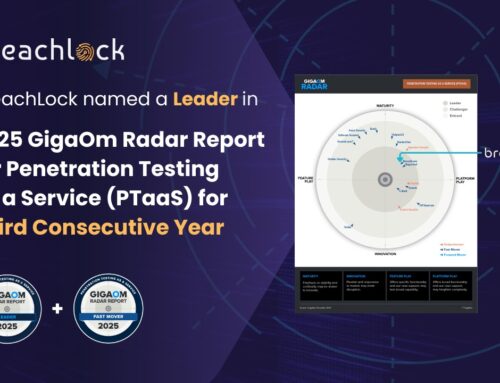
Weekly Cybersecurity News Recap : Palo Alto Networks, Zscaler, Jaguar Land Rover, and Cyber Attacks
Welcome to your weekly cybersecurity briefing. In a digital landscape where the only constant is change, this past week has been a stark reminder that vigilance is not just a best practice, but a necessity for survival. From corporate giants making strategic moves to protect the cloud to sophisticated threat actors breaching the defenses of reputable organizations, the cybersecurity horizon remains dynamic and challenging. This recap delves into significant developments involving giants like Palo Alto Networks and Zscaler, sheds light on a high-profile breach affecting Jaguar Land Rover, and generally examines the escalating threat landscape of cyber attacks. Staying informed is the first line of defense; let’s unpack the critical incidents and strategic shifts that defined the past week in cybersecurity.
Strategic Moves: Palo Alto Networks, Zscaler, and Cloud Security
The evolving nature of cloud infrastructure demands robust security solutions, and industry leaders are responding with key strategic initiatives. Palo Alto Networks, a prominent force in network security, continues to solidify its commitment to cloud-native security. Their focus remains on providing comprehensive, integrated solutions that protect applications, data, and users across hybrid and multi-cloud environments. This involves advancements in their Prisma Cloud platform, which aims to offer a holistic security posture management, vulnerability management, and threat protection for cloud workloads.
Similarly, Zscaler, known for its Zero Trust Exchange platform, is pushing the boundaries of secure access service edge (SASE) and zero trust network access (ZTNA). Their strategy revolves around ensuring secure access to applications and data from any device, anywhere, without relying on traditional perimeter defenses. This past week’s discussions highlight their continued innovation in securing the distributed workforce and cloud-centric architectures, emphasizing the importance of a secure digital experience for enterprises.
Jaguar Land Rover Cyber Attack: A Case Study in Data Breach Impact
The automotive industry, increasingly reliant on interconnected systems and digital supply chains, is not immune to sophisticated cyber threats. Recent reports confirm that luxury automaker Jaguar Land Rover (JLR) fell victim to a significant cyber attack. While specific technical details of the breach, such as the initial vector or the exploit utilized, are still under investigation, the incident underscores the broad reach of modern cyber campaigns.
Cyber attacks on large corporations like JLR often aim for data exfiltration, intellectual property theft, or operational disruption. Such breaches can lead to substantial financial losses, reputational damage, and, significantly, a compromise of sensitive customer and employee data. For JLR, this incident necessitates a thorough forensic investigation to identify the extent of the compromise and to implement immediate remediation actions to prevent future occurrences.
Understanding the Broader Cyber Attack Landscape
Beyond individual incidents, the overall cyber attack landscape continues to intensify. Ransomware remains a persistent and evolving threat, with threat actors employing increasingly sophisticated techniques, including double extortion tactics where data is not only encrypted but also exfiltrated and threatened for release. Supply chain attacks have also grown in prominence, targeting vulnerabilities within an organization’s software or service providers to gain access to the primary target.
Phishing and social engineering tactics are still highly effective initial access vectors, often preceding more complex ataques. Advanced Persistent Threats (APTs), often backed by nation-states, continue to target critical infrastructure and high-value intellectual property with sophisticated, long-term campaigns designed to evade detection. The sheer volume and diversity of these threats demand a multi-layered approach to cybersecurity, combining technological defenses with robust security awareness training and incident response planning.
Remediation Actions and Best Practices for Enhanced Security
In light of ongoing threats and incidents, organizations must prioritize proactive and reactive cybersecurity measures. Here are key remediation actions and best practices:
- Implement Multi-Factor Authentication (MFA): Enforce MFA across all critical systems and applications to significantly reduce the risk of unauthorized access due to compromised credentials.
- Regular Software Patching and Updates: Maintain a rigorous patching schedule for all operating systems, applications, and network devices to address known vulnerabilities promptly.
- Robust Incident Response Plan: Develop, test, and regularly update an incident response plan to ensure a swift and effective reaction to security breaches, minimizing damage and recovery time.
- Employee Security Awareness Training: Conduct regular training sessions to educate employees about common cyber threats like phishing, social engineering, and the importance of strong password hygiene.
- Network Segmentation: Implement network segmentation to isolate critical systems and sensitive data, limiting the lateral movement of attackers in the event of a breach.
- Data Backup and Recovery: Regularly back up critical data and test recovery procedures to ensure business continuity in the face of ransomware or data loss incidents.
- Zero Trust Architecture: Adopt a Zero Trust security model, where no user or device is implicitly trusted, and access is granted only after strict verification.
- Endpoint Detection and Response (EDR)/Extended Detection and Response (XDR): Deploy EDR or XDR solutions for continuous monitoring and rapid detection of suspicious activities on endpoints and across the entire IT environment.
Conclusion
This week’s cybersecurity landscape underscores the relentless pace of digital threats and the imperative for continuous adaptation. The strategic movements by Palo Alto Networks and Zscaler illustrate the industry’s focus on cloud security and Zero Trust principles, offering promising directions for future defenses. Conversely, the Jaguar Land Rover breach serves as a stark reminder that even large, well-resourced organizations are vulnerable to sophisticated cyber attacks, emphasizing the critical need for proactive security measures and robust incident response capabilities. Staying informed about the latest threats, embracing advanced security architectures, and fostering a strong security culture are paramount for safeguarding digital assets in this ever-evolving threat environment. Vigilance is not merely a strategy but a fundamental requirement for digital resilience.





